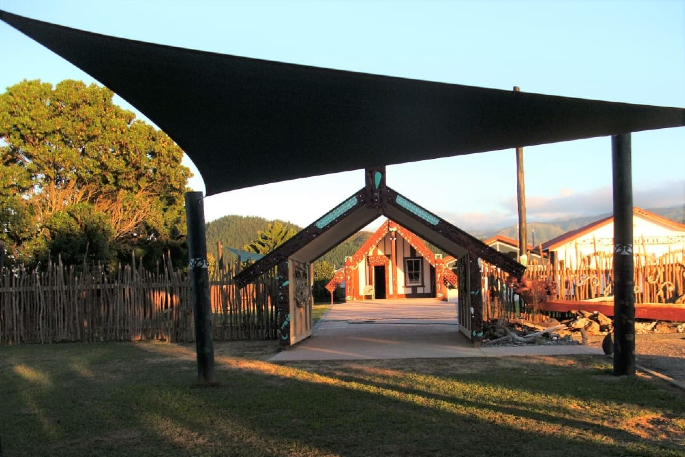There's concern for the future of many marae buildings, with 70 per cent of them likely to be considered earthquake-prone within the next 20 years.
One expert is worried many people are unaware of the risk, while others are worried about how upgrades will be paid for.
There are about 1300 marae across the country, with many of the buildings on them more than half a century old.
A new law for earthquake prone buildings, introduced five years ago, requires all structures to be surveyed by local councils.
But Massey University professor Regan Potangaroa is worried many communities and marae are not aware of the changes, or the need to have an engineer's report and seismic assessment by 2026.
"I suspect there are a lot of marae committees that don't know what to do. They've got letters from their district council or from their local territorial authority, telling them their building or their wharenui is earthquake-prone and they're just sitting on it," says Potangaroa.
 Tūkorehe Marae in Horowhenua is accepting it will not get all its buildings seismically strengthened by the deadline. Photo: Tūkorehe Marae/Supplied.
Tūkorehe Marae in Horowhenua is accepting it will not get all its buildings seismically strengthened by the deadline. Photo: Tūkorehe Marae/Supplied.
"My estimate is that 40 will end up being demolished."
So far, buildings at two marae have already been demolished because of the risk, but Prof Potangaroa wants to avoid more being pulled down, saying the cost was a lot more than money.
"It's very hard to rebuild a culture and a time. If you've got a marae that's 100 years old that's attached to the community, there's no way that you can rebuild it. You can rebuild the function but you can't build the spirit," he says.
Tūkorehe Marae in Horowhenua is one that can't afford to seismically strengthen, but the requirement is low on its priority list.
Iwi trust spokesperson Lindsay Poutama says they have accepted that some buildings won't be brought up to standard by deadline.
"Our marae, our whare tūpuna is just like a parent and sooner or later we've got to lose that parent. And we actually had to be prepared to accept the loss if there were other things that needed to be done," says Poutama.
When consultation for the law change was being done in 2013, there was strong opposition to marae being included. Many submitters wanted an exemption, which was ultimately granted to agriculture buildings.
Instead, marae were classified as 'priority buildings', something Poutama says was overkill.
"If there's a seismic event strong enough to take out the marae, it'll take out everything else around it anyway. That's our current reality until we have enough money to seismically strengthen it.
"And we don't know what seismically strengthening actually looks like but we just haven't had the time, the capacity or the capability," he says.
It's a fate also being weighed up at Te Ore Ore Marae in Masterton, whose wharenui was built in 1935. The district council declared it earthquake prone in 2017.
Marae committee chair Demetrius Potangaroa says meeting the council's requirements is an onerous task.
"What we actually wanted to know was what were the finer points, or how is this measured to get a full understanding," says Potangaroa.
A few years ago, the marae received money for upgrades from the Provincial Growth Fund - but this only covered things like a new roof, not seismic strengthening.
"We have been told that we need to consider steel beam structures, just to add strength to the building. I guess we never really knew what to expect with earthquake proofing and what that detail is," says Potangaroa.
However, he's confident his marae will meet the 2026 deadline.



3 comments
Hmmm
Posted on 18-10-2022 17:58 | By Let's get real
Madness.... I suspect that most domestic buildings would suffer a much worse fate than any of the Marae that I have been onto. Concrete tile roofs and brick cladding isn't the way that Marae are built. But, the users won't be paying for the remedial work, if required... It will fall to the Lotteries commission, Local authorities and government bodies to bail out the committees that have been lax in their processes and haven't sought professional advice.
How Ridiculous
Posted on 18-10-2022 20:25 | By Yadick
Although a marae can have a lot of people at a gathering it's no different to a wedding, a 21st, a . . . held at anyone's house. We're not having to earthquake proof our homes, our houses so why are maraes having too. They're normally (as far as I know) a single story building. What's the real issue here? This seems senseless.
Leave The Maraes Alone
Posted on 19-10-2022 06:41 | By Thats Nice
Do you really need to change the structure of a building when it's used how many times a year and how will people be able to afford this?
Leave a Comment
You must be logged in to make a comment.